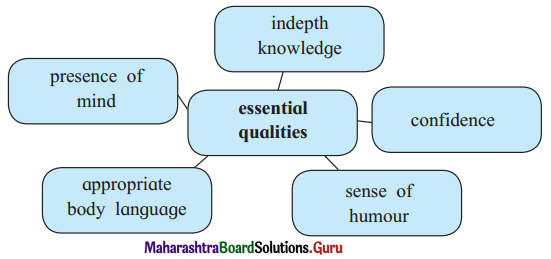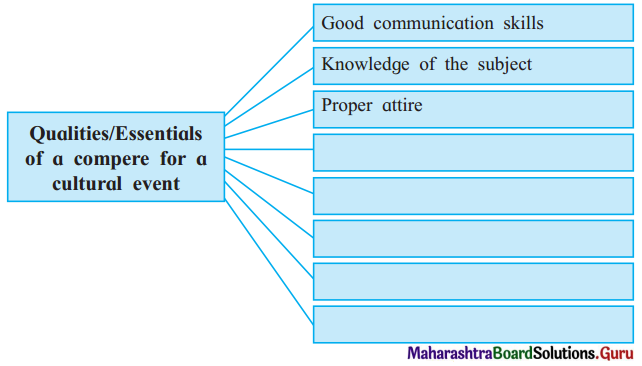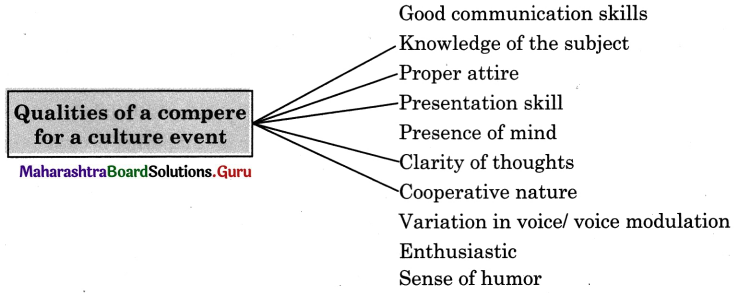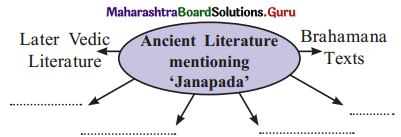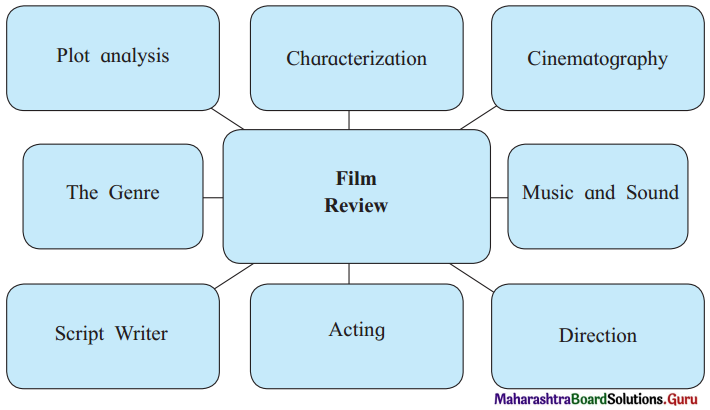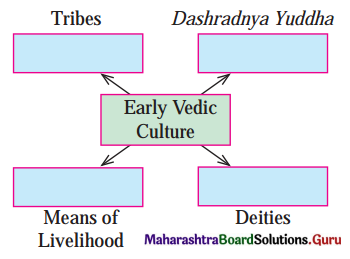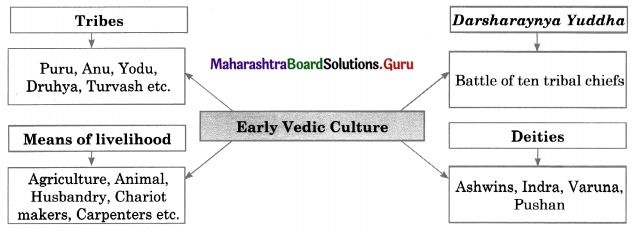Balbharti Maharashtra State Board Class 12 Secretarial Practice Important Questions Chapter 12 Stock Exchange Important Questions and Answers.
Maharashtra State Board 12th Secretarial Practice Important Questions Chapter 12 Stock Exchange
1A. Select the correct answer from the options given below and rewrite the statements.
Question 1.
The Securities Contracts (Regulation) Act was passed in the year _____________
(a) 1956
(b) 1947
(c) 1971
Answer:
(a) 1956
Question 2.
SEBI was established in the year _____________
(a) 1988
(b) 1987
(c) 1986
Answer:
(a) 1988

Question 3.
The Oldest Stock Exchange in Asia is _____________
(a) BSE
(b) NSE
(c) LSE
Answer:
(a) BSE
Question 4.
The BSE switched to electronic trading system in _____________
(a) 1988
(b) 1995
(c) 1956
Answer:
(b) 1995
Question 5.
Stock Exchange is also formed/termed as _____________
(a) Local Market
(b) Super Market
(c) Stock Market
Answer:
(c) Stock Market
1B. Match the pairs.
Question 1.
| Group ‘A’ | Group ‘B’ |
| (1) SEBI | (a) Sensex |
| (2) Stock Exchange | (b) Primary market |
| (3) Nifty | (c) Auction |
| (4) Bear | (d) Made up of 50 listed companies |
| (5) SENSEX | (e) Optimistic about rising in prices of securities |
| (f) Pessimistic about fall in prices of securities |
| (g) Purchase and sale of shares |
| (h) Machinery regulating Stock Exchanges |
| (i) BSE |
| (j) NSE |
Answer:
| Group ‘A’ | Group ‘B’ |
| (1) SEBI | (h) Machinery regulating Stock Exchanges |
| (2) Stock Exchange | (g) Purchase and sale of shares |
| (3) Nifty | (d) Made up of 50 listed companies |
| (4) Bear | (f) Pessimistic about fall in prices of securities |
| (5) SENSEX | (i) BSE |
Question 2.
| Group ‘A’ | Group ‘B’ |
| (1) Bull | (a) A Secondary Market for Securities |
| (2) Stag | (b) Auction |
| (3) Broker | (c) Invests in Primary Market |
| (4) Stock Exchange | (d) Mandiwala |
| (5) NSE | (e) Deals on behalf of his client |
| (f) A broker optimistic about rising in prices of securities |
| (g) A broker pessimistic about fall in prices of securities |
| (h) 1992 |
| (i) 1988 |
| (j) 1996 |
Answer:
| Group ‘A’ | Group ‘B’ |
| (1) Bull | (f) A broker optimistic about rising in prices of securities |
| (2) Stag | (c) Invests in Primary Market |
| (3) Broker | (e) Deals on behalf of his client |
| (4) Stock Exchange | (a) A Secondary Market for Securities |
| (5) NSE | (h) 1992 |
1C. Write a word or a term or a phrase that can substitute each of the following statements.
Question 1.
He/She acts as a link between Jobber and the investor.
Answer:
broker
Question 2.
The securities contract (Regulation) Act 1956, provides the functioning, licensing of this institution.
Answer:
Stock Exchange

Question 3.
The first listed Stock Exchange in India.
Answer:
BSE
Question 4.
The professional speculator in the Stock Exchange.
Answer:
Jobber
Question 5.
An intermediary between investor and broker.
Answer:
Jobber
Question 6.
The single and most important institution in the secondary market for securities.
Answer:
Stock Exchange
1D. State whether the following statements are True or False.
Question 1.
Stock Exchange in India is regulated by SEBI.
Answer:
True
Question 2.
Stock Exchange is also called a Primary Market.
Answer:
False

Question 3.
The NSE is the first listed Stock Exchange in India.
Answer:
False
Question 4.
The objective of SEBI is to protect the interests of companies.
Answer:
False
Question 5.
The securities market is an organised market in India.
Answer:
True
Question 6.
Stock Exchanges reflect the financial progress of a country.
Answer:
True
Question 7.
There is no control on Stock Exchange.
Answer:
False
Question 8.
Stock Exchange is a place for buying and selling securities.
Answer:
True

Question 9.
Insider trading is legally permitted.
Answer:
False
1E. Find the odd one.
Question 1.
BSE, NSE, LSE
Answer:
LSE
Question 2.
Crash, Bull, Bear
Answer:
Crash
Question 3.
Sensex, Rally, Nifty
Answer:
Rally
1F. Complete the sentences.
Question 1.
A bear broker whose expectations have gone wrong and makes a loss in dealings is called _____________
Answer:
Lame duck
Question 2.
SEBI has its headquarters in _____________
Answer:
Mumbai

Question 3.
The NSE (National Stock Exchange of India) was incorporated in the year _____________
Answer:
1992
Question 4.
SEBI regulates capital markets in _____________
Answer:
India
Question 5.
A smart speculator, who quickly judges market trends thereby makes profits is _____________
Answer:
a wolf
Question 6.
The instructions are given by an investor to the broker to buy or sell a security when it reaches a certain price is called _____________
Answer:
stop-loss
1G. Select the correct option from the bracket.
Question 1.
| Group ‘A’ | Group ‘B’ |
| (a) Oldest Stock Exchange in India | (1) ………………………. |
| (b) ……………….. | (2) Stock Exchange |
(BSE, Secondary Market)
Answer:
| Group ‘A’ | Group ‘B’ |
| (a) Oldest Stock Exchange in India | (1) BSE |
| (b) Secondary Market | (2) Stock Exchange |
1H. Answer in one sentence.
Question 1.
What is SEBI?
Answer:
SEBI is a statutory body under the SEBI Act, 1992, which regulates and controls the activities of the stock exchanges and protects the interest of investors.

1I. Correct the underlined word/s and rewrite the following sentences.
Question 1.
NSE is the oldest Stock Exchange in Asia.
Answer:
BSE is the oldest Stock Exchange in Asia.
Question 2.
Insider Trading is the practice of buying and selling securities within the same trading day before the closing of markets on that day.
Answer:
Day Trading is the practice of buying and selling securities within the same trading day before the closing of markets on that day.
Question 3.
The sensitive index called Sensex is made up of the 50 largest and actively traded stocks of listed companies.
Answer:
The sensitive index called Sensex is made up of the 30 largest and actively traded stocks of listed companies.
Question 4.
Investors can deal in their securities through a Jobber.
Answer:
Investors can deal in their securities through a broker.

Question 5.
In India, Bear is known as Tejiwala.
Answer:
In India, Bear is known as Mandiwala.
2. Explain the following terms/concepts.
Question 1.
Insider Trading
Answer:
Insider trading is the trading of a public listed company’s securities by an individual with access to non-public information about the company. It is illegal as it is unfair to other investors who do not have access to the information.
Question 2.
Sensex
Answer:
It is the Index of the BSE that was created in 1986, which represents the increase or decrease in prices of stocks of a selected group of companies. The sensitive Index called Sensex is made up of the 30 largest and actively traded stocks of listed companies.
Question 3.
Nifty
Answer:
It is the index of the NSE created in 1996 made up of 50 listed companies. It includes all the 30 Sensex stocks.
Question 4.
Crash
Answer:
If the Sensex or Nifty moves in a downward direction, it is called a crash. Bears are active during this period.
Question 5.
Stop-loss
Answer:
It is instruction or order given by an investor to the broker to buy or sell a security when it reaches a certain price. This instruction is given by the investor when he wants to avoid losses when the prices fall below the stop price.
3. Study the following case/situation and express your opinion.
1. Ajay is a licensed member of the Stock Exchange Arnav his client wants to purchase securities. Answer the questions from the above situation.
Question (a).
By what term/name will Ajay be known?
Answer:
Ajay will be known as ‘Broker’.
Question (b).
How did Ajay become/acquire the term?
Answer:
Ajay acquired the term as ‘Broker’ by registering himself with the Stock Exchange as it is required for the purpose of trading in the Stock Exchange.
Question (c).
How did the transaction between them take place?
Answer:
The transaction between Ajay and Arnav was validated by a note given by Ajay to his client Arnav. This note is called contract note which both Ajay and Arnav had a copy of each immediately after their transaction within 24 hours.

2. Anurag is an employee of the Stock Exchange who passes sensitive information relating to likely high growth in profits of ‘sun’ company to his relative Jyoti. Jyoti thus buys shares at low prices. But due to the Corona Virus spread and lockdown and worldwide panic, the Sensex is moving swiftly in a downward direction. Answer the following queries.
Question (a).
Describe the nature of the term that describes Jyoti’s actions?
Answer:
The term that describes Jyoti’s actions is known as ‘Insider trading’ means trading due to non-public sensitive information about ‘SUN’ Company.
Question (b).
Is Jyoti’s action normal? Why?
Answer:
Jyoti’s action which is based on insider information is illegal. It is unfair to other investors who do not have access to the information.
Question (c).
What is this downward direction called?
Answer:
If the Sensex/ Nifty moves in a downward direction it is called a ‘CRASH’.
3. Moon Co-Ltd. listed its shares in Bombay Stock Exchange (BSE). Due to the COVID-19 pandemic, the Stock Exchanges in India came crashing down. Answer the queries.
Question (a).
What do you mean by the term Stock Exchange Crash?
Answer:
If the Sensex or Nifty moves in the downward direction, it is called a crash.
Question (b).
What is the Index of BSE called?
Answer:
The index of BSE is called Sensex which represents the increase or decrease in prices of stocks of a selected group of companies.
Question (c).
The Index of BSE comprises of how many companies.
Answer:
The index of BSE or Sensitive index called Sensex is made up of the 30 largest and actively traded stocks of listed companies. It was created in 1986.

4. Keith Bionics Ltd. a newly formed company makes a public issue of shares for the first time to raise capital funds. It also gets itself listed for the first time with BSE. Answer the queries.
Question (a).
What is Keith Bionics’ first time issue termed as/called?
Answer:
The public issue of shares or other securities by the new company ‘Keith Bionics Ltd/is termed as/called ‘Initial Public Offer (IPO)’.
Question (b).
What do you mean by listing with BSE?
Answer:
Listing means an agreement signed by Keith Bionics Ltd. with BSE so that its share and securities get a platform to be bought and sold in BSE multiple times.
Question (c).
What is the advantage of listing to Keith Bionics Ltd.?
Answer:
Because of listing with BSE the shares and securities of Keith Bionics Ltd. can be bought and sold (traded) in BSE repeatedly thus providing marketability along with liquidity for this company’s share.
4. Distinguish between the following.
Question 1.
Bull and Bear
Answer:
| Points | Bull | Bear |
| 1. Meaning | A speculator who purchases the securities with the intention to sell them at a higher price later is called the Bull. | A speculator who sells the securities when the prices of securities start falling is called the Bear. |
| 2. Functions | A bull buys securities at a lesser price and sells them at a maximum higher price to make the maximum possible profit. | A bear buys securities at a lesser price and sells them at a little higher price to make a desirable profit and to avoid selling at a still lower prices in the future. |
| 3. Expectation | A bull always anticipates that the prices of securities will rise further in the future. | A bear always anticipates that the prices of securities will fall further in the future. |
| 4. Other names | A bull is also called ‘Tejiwala’. This is because he always anticipates the price to rise. | A bear is also called ‘Mandiwala’. This is because he always expects the price to fall. |
| 5. Nature/View of future | A bull takes an optimistic view of the future. | A bear takes a pessimistic view of the future. |
5. Answer in brief.
Question 1.
Explain the management and organizational structure of the Stock Exchange in India.
Answer:
(i) Management of Stock Exchange:
- The Executive committee of the stock exchange looks after the overall activities and management of the stock exchange.
- The composition, powers, and the name of the executive committee differ from exchange to exchange.
- There are other supporting committees to assist the executive committee like an advisory committee, listing committee, etc.
(ii) Organization Structure of Stock Exchanges in India:
In India, the stock exchange may be organized in one of the following three forms:
- Voluntary non-profit making organization.
- Companies with liability limited by shares.
- Companies with liability limited by guarantee.
The Securities Contract (Regulations) Act 1956, provides rules for their functioning, licensing, recognition, and controlling speculations.
(iii) Membership of Stock Exchange:
The eligibility criteria for membership may differ from stock exchange to stock exchange.

6. Justify the following statements.
Question 1.
Stock Exchange is a Secondary Market.
Answer:
- The stock exchange is a specific place where the trading of securities is arranged in an organized method.
- In the primary market, new securities are floated by the issuing companies and direct contact with the public at large is established for selling of the securities.
- A stock exchange is the single most important institution in the secondary market for securities.
- It is the place where already issued and outstanding shares are bought and sold, repeatedly.
- Thus, it is rightly said that Stock Exchange is a secondary market which is an organized market in India.
Question 2.
The objective of SEBI is to protect the interest of investors.
Answer:
- The Securities and Exchange Board of India was set up on 12th April 1988, the main purpose of setting up SEBI was to develop and regulate stock exchange in India.
- The objectives of SEBI are to protect the interest of the investors.
- To bring professionalism in the working of intermediaries in the capital markets, i.e., brokers, mutual funds, stock exchanges, Demat depositories, etc. is also an objective of SEBI.
- Objectives of SEBI also include creating a good financial climate, so that companies can raise long-term funds through the issue of securities – shares and debentures.
- Thus, it is rightly said that the objective of SEBI is to protect the interest of investors.
Question 3.
Insider trading is considered illegal.
Answer:
- Insider trading refers to the trading of shares on the stock exchanges with sensitive information, which is not yet published.
- The insiders include managers, directors, other employees, auditors, etc., who have a hold over sensitive information and accordingly buy or sell on the Stock Exchanges.
- For instance, if the sensitive information relates to likely high growth in profits of the company, then the insiders may buy the shares at a low price and when the information is published, the share price may shoot up considerably resulting in the insiders selling and making huge profits.
- Insider trading is restricted by SEBI.
- Thus, insider trading is considered illegal.
7. Answer the following questions.
Question 1.
What is Stock Exchange? Explain the organizational structure and features of the Stock Exchange.
Answer:
Stock Exchange is a place where securities are purchased and sold in an organized manner. It is also known as Stock Market, Share Market, Share Bazaar, or Secondary Market. The Securities Exchange Board of India regulates the stock exchange.
Organization Structure of Stock Exchanges in India:
In India, the stock exchange may be organized in one of the following three forms:
- Voluntary Non-Profit making organization
- Companies with liability limited by shares
- Companies with liability limited by guarantee
The Securities Regulation Act 1956 provides rules for functioning, licensing, recognition, and controlling the stock exchanges.

Features of Stock Exchange:
(i) Market for Securities:
Stock exchange deals with securities. Securities include equity shares, preference shares, debentures, government securities, and bonds, etc. It is a trading place where corporate securities and government securities are traded.
(ii) Second Hand Securities:
Stock exchange includes trading of securities that are already issued by the companies. In other words, second-hand securities are bought and sold among investors in the stock exchange.
(iii) Listed Securities:
Only listed securities can be traded on a stock exchange. Listing of securities provides protection of the investor’s interests. The company also has to strictly follow the rules laid down by the stock exchange.
(iv) Organised and Regulated Market:
The stock exchange is an organized market of securities. All the listed companies have to follow the rules and regulations laid down by the stock exchange.
(v) Specific Location:
The stock exchange is a place where securities are traded. It is a marketplace where brokers and intermediaries meet to conduct dealings in securities. Now, the stock exchange has also been digitalized.
(vi) Only Members can trade:
The stock exchange is only open to its members who are known as brokers. Brokers act as agents between members or their authorized agents on behalf of the investors.
Question 2.
Explain the importance of the Stock Exchange.
OR
State/Explain the role of the Stock Exchange.
Answer:
The stock exchange’s role is vital for the economic development of a nation. It is briefly stated as follows:
(i) Assist in raising funds:
Stock Exchanges’ enables companies to raise long-term funds which can be utilized for expansion and modernization and also for the purpose of setting up new projects.
(ii) Facilitates listing of shares:
The companies that issue shares to the public can get their shares listed in one or more stock exchanges thus, enabling them to raise long-term funds through the issue of shares.
(iii) Facilitates trading of shares:
The stock exchanges facilitate the trading of shares between sellers and buyers thus, brings liquidity to the shares. Sellers can sell shares and realize cash when in need of funds or whenever they want to book profits.

(iv) Generate Employment:
Stock Exchanges generate employment facilities in the country as a number of brokers, sub-brokers, agents, and others employment. Stock Exchanges also facilitate indirect employment in the various sectors.
(v) Facilitates Capital Formation:
Stock Exchanges encourage investors to invest in the primary and secondary stock markets. By investments, money is saved. These savings leads to investment in shares and other securities thus, leading to capital formation.
(vi) Stimulates Industrial Development:
The stock exchanges facilitate mobilization of long-term funds through the issue of shares and debentures which are utilized by companies for Expansion and Modernization, Setting up of new projects.
Thus enhancing and improving industrial development in the country.
(vii) Facilitates Regional Development:
The stock exchanges facilitate regional development through companies that generate long-term funds due to them. Thus, utilizing the funds generated for the development of backward regions by setting up new units.
(viii) Provides Investment Opportunity:
The stock exchanges provide additional opportunities for investors to invest in shares. Usually, returns from stock markets are much higher as compares to traditional forms of investment, provided investment is done in good companies that provide good returns to investors.
(ix) Provides revenue to the government.
The stock exchanges provide revenue to the government either directly or indirectly. The stock exchanges pay tax on the revenue earned by them, an investor who invests in stock markets are subject to capital gains tax. The companies also pay their taxes thus, providing revenue to the government.
(x) Promotes efficient management of listed companies:
Stock Exchanges indirectly promote the efficiency of the management of listed companies. Listed companies have to perform well for their own interest and that of their shareholders. The efficiency of the listed company is reflected in the share prices on stock markets. Higher the efficiency, higher is the performance and as such higher the prices of the shares on the stock markets.
8. Attempt the following.
Question 1.
Write about the major Stock Exchanges in India.
Answer:
Following are the two most important Stock Exchanges in India.
(i) Bombay Stock Exchange BSE:
- Bombay Stock Exchanges commonly referred to as the BSE is a stock exchange located on Dalai Street, Mumbai.
- It is the 11th largest Stock Exchange in the world by market capitalization. Established in 1875, BSE is Asia’s first Stock Exchange and is the first listed Stock Exchange in India.
- At that time it was called ‘The Native Share and Stock Broker’s Association. (NSSBA). Approximately over 5000 companies are listed in the BSE.
- It is now a demutualized and corporatized entity registered under the Companies Act 1956.
- (e) The BSE switched to an electronic trading system in 1995. This automated, screen-based trading platform is called BSE-On-Line Trading (BOLT).
- BSE is the first exchange in India and second in the world to obtain ISO 9001:2000 certifications.
- The BSE has also introduced a centralized
exchange-based internet system, bsewebx.co.in to enable investors anywhere in the world to trade on the BSE platform. - It operates one of the most respected capital market educational institutes in the country (The BSE Institute Ltd). BSE also provides depository services through its Central Depository Services Ltd. CDSL arm.

(ii) National Stock Exchange (NSE):
- NSE was set up by a group of leading Indian Financial Institutions in 1992 as a company and was recognized as a Stock Exchange in 1993 under the Securities Contracts (Regulation) Act, 1956.
- It started trading activities in 1994.
- It is the largest and most modem stock exchange in India.
- The NSE is located in Mumbai. It was the first demutualized electronic exchange in India.
- NSE was the first exchange in the country to provide a modern, fully automated screen-based electronic trading system that offered easy trading facilities to investors.
- The main index of NSE is the NIFTY which was launched in 1996.
Features:
- It has nationwide coverage.
- There is transparency in dealings.
- Investors can check the exact price at which the transaction took place.
- The index of NSE is called The broader 50 share – NIFTY.
Objectives:
- Establishing nationwide trading facilities for all types of securities.
- Ensuring equal access to investors all over the country through an appropriate communication network.
- Meeting informational benchmarks and standards.
- Enabling shorter settlement cycles.
